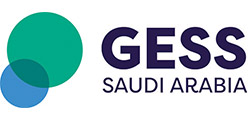Just over a decade ago, a censorious book was published, claiming that the majority of students in American universities were not improving in their skills of critical thinking and writing as a result of their university education (Arum & Roksa, 2010). This text provided ammunition on behalf of the many critics of higher education, in particular the institutional constructs that permitted often comical but limited examples of academic freedom, excessive intellectualism from the liberal arts, and politically driven scholarship and teaching. It offered data to support the common assertion among employers, increasingly up to that point, that significant and troubling skill deficiencies existed among many university graduates. While many employer complaints were fully unfair--as employers have frequently passed the responsibility of on-the-job training to universities--this attitude had permeated the culture, often as a result of well-known entrepreneurs bragging that they had been successful without a university degree (e.g., Bill Gates, Steve Jobs, Mark Zuckerberg). Since that time, higher education has become much more adept at presenting itself as job-focused, amenable to lifelong learning. Universities talk about micro-credentials that allow for flexible delivery of timely skills. They boast about the employment rates of graduates.
They hesitate but still steadily adopt and adapt to technologies. In short, institutions of higher education are responding to the global critique that ivory tower institutional behaviours do not fit with fast-changing labour markets. But the core delivery mechanisms, including the institutions of academia (i.e. the disciplines), have not changed much. The term “institution” in this sense refers to the social constructs of a profession or system, in this case, academic faculty, who largely control the terms of delivery within universities and colleges. Compared to quickly adapting secondary curricula, which have over the past decade become more focused on generalizable skills and cross-disciplinary functions, such as the International Baccalaureate and the slow but steady movement away from rote memorization in Advanced Placement (American) and A-Level (British), higher education is still burdened by deep hierarchies that reinforce traditional modes of educational delivery. In a sense, the abrupt transition marker from secondary to tertiary education is a reminder that the social institutional constructs of school education and university education are in different spheres. This division does not need to persist. In my talk, I will briefly explore why this division exists and what both secondary and tertiary institutions (as well as regulators) can do to ensure that the generalizable skill gains from secondary curricula continue into tertiary institutions.

